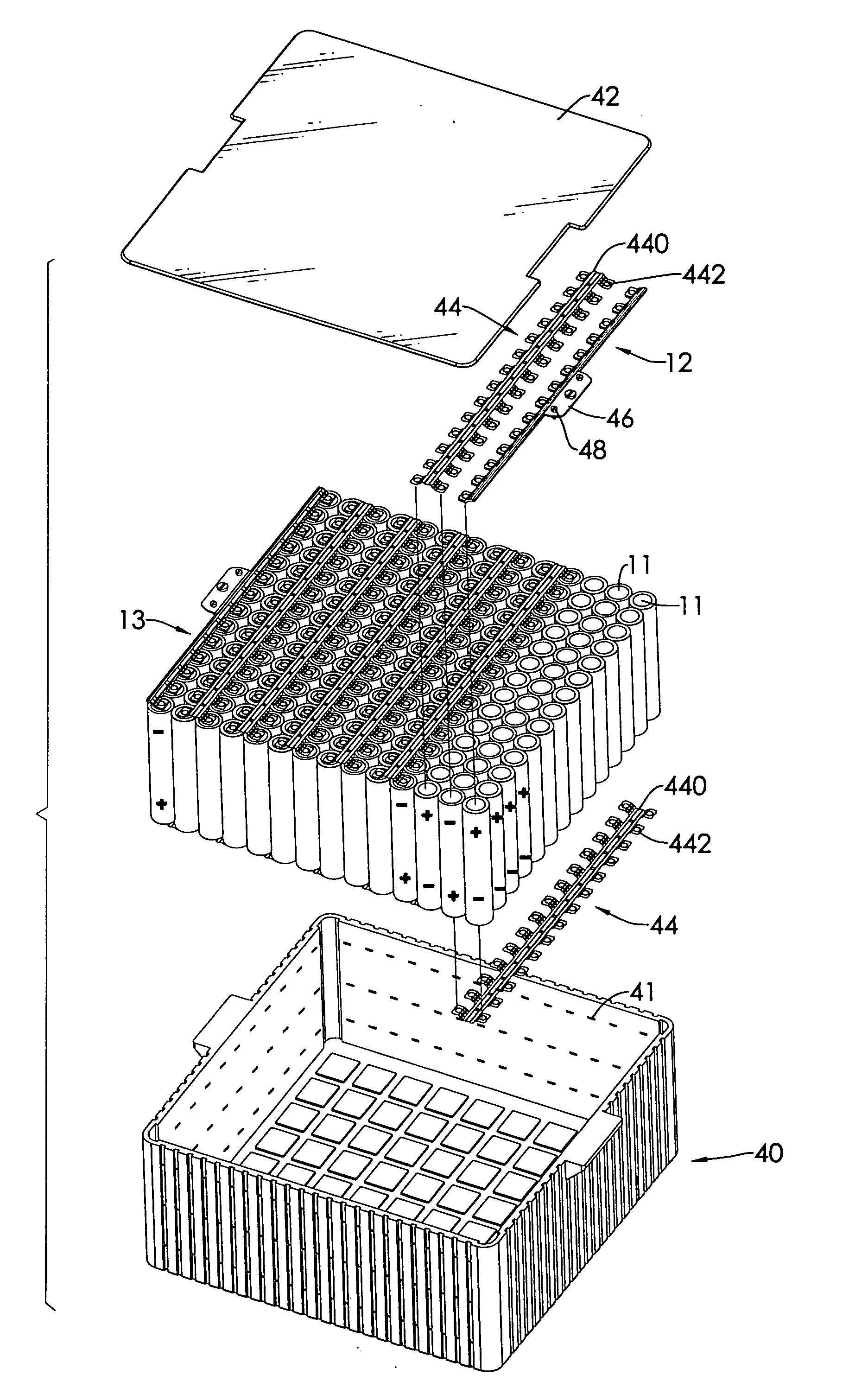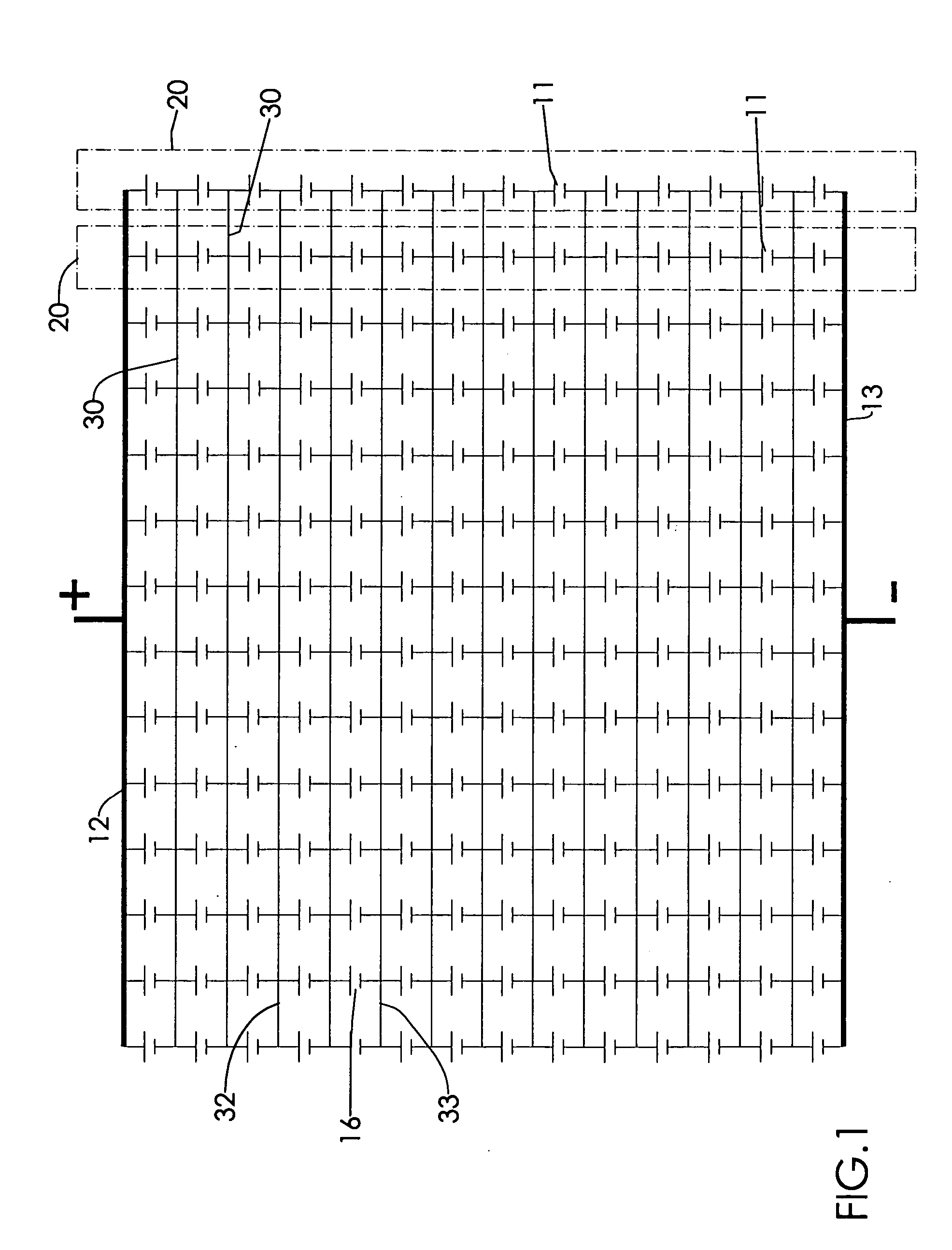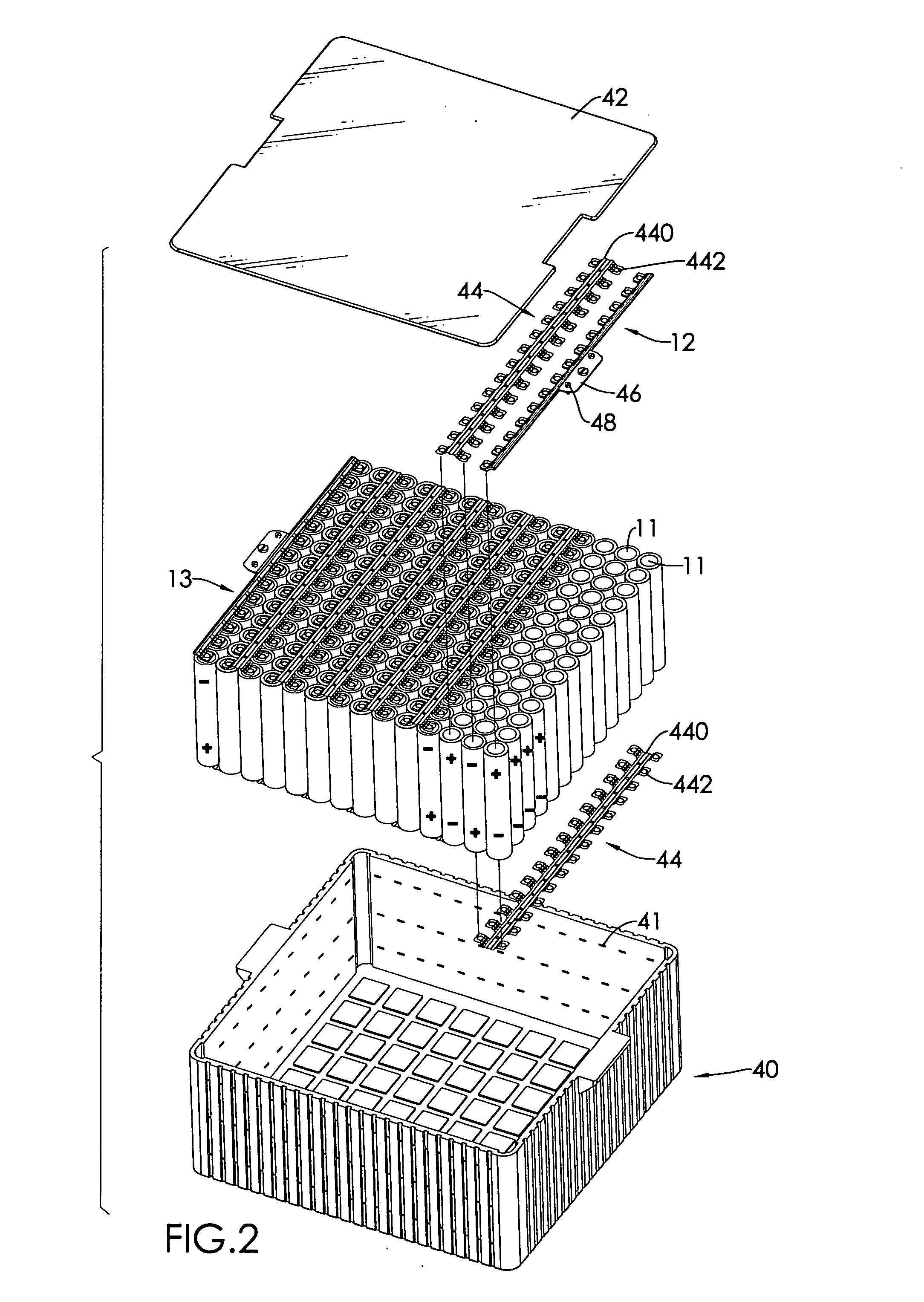Battery assembly
a battery and assembly technology, applied in the direction of cell components, cell component details, coupling device connections, etc., can solve the problems of significant reliability challenge, design suffers from poor reliability and flexibility, whole assembly fails, etc., and achieves improved energy density, power density and reliability. the effect of improving reliability and safety
- Summary
- Abstract
- Description
- Claims
- Application Information
AI Technical Summary
Benefits of technology
Problems solved by technology
Method used
Image
Examples
example 1
[0045] A battery of 50×20 configuration and 185V is made by connecting 1,000 lithium-ion cells, each having 3.0 ampere-hour capacity, 100.1 g weight, 2.7 cm diameter and 7.0 cm height, with pure nickel conductive plates stamped out of 10-micron thick nickel sheets as described in this invention. The DC resistance of the cells measured at 50% depth of discharge is 14.2 milliohms. Two pure copper pieces, 0.6 cm×0.35 cm×54 cm, serve as current collectors. The combined cell weight is 10,010 g grams and the battery weight is 10,153 grams; only 1.43% weight is added by the connectors. The discharge capacity, DC resistance and loaded voltage at 30 amperes and 50% depth of discharge are measured and listed in Table I. The power output of this battery is higher than 105,540 w.
CellBattery, measuredBattery, predictedCapacity3.0Ah60Ah60AhDC resistance14.2milliohm35.6milliohm35.5milliohmLoad Voltage,3.52V175.9V176.0V10 C
example 2
[0046] A battery assembly is structured by connecting in series two of the batteries in example 1. The nominal voltage of the assembly is 370 volts and the power output is larger than 211,080 watts.
example 3
[0047] A battery is made as in example 1 but a failure is simulated by disconnecting a weld to cell 12. The discharge capacity at 60 amperes current and DC resistance at 50% depth of discharge are measured to be 57 ampere-hours and 35.7 milliohms. The load voltage at 10 C is 175.7 volts, a power loss of mere 0.2% at this rate. When a second failure is created by disconnecting a cell 13, the discharge capacity remains at 57 ampere-hours. The load voltage is 175.5 volts, a power loss of 0.4%.
PUM
| Property | Measurement | Unit |
|---|---|---|
| distance | aaaaa | aaaaa |
| volume | aaaaa | aaaaa |
| volume | aaaaa | aaaaa |
Abstract
Description
Claims
Application Information
 Login to View More
Login to View More - R&D
- Intellectual Property
- Life Sciences
- Materials
- Tech Scout
- Unparalleled Data Quality
- Higher Quality Content
- 60% Fewer Hallucinations
Browse by: Latest US Patents, China's latest patents, Technical Efficacy Thesaurus, Application Domain, Technology Topic, Popular Technical Reports.
© 2025 PatSnap. All rights reserved.Legal|Privacy policy|Modern Slavery Act Transparency Statement|Sitemap|About US| Contact US: help@patsnap.com



